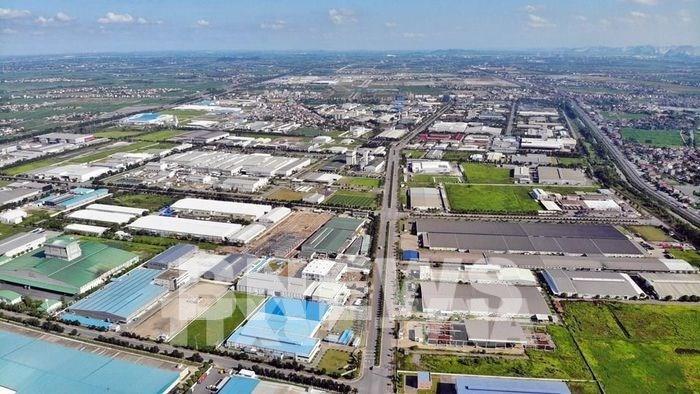On April 8, the People's Committee of Lâm Đồng Province announced its decision to establish the Đạ Oai Industrial Cluster (in the newly formed Đạ Huoai District), covering a total area of 40.79 hectares, with infrastructure investment costs exceeding 172 billion VND.

Lâm Đồng establishes Đạ Oai Industrial Cluster with a scale of over 40 ha. Illustrative photo: TTXVN .
Accordingly, the Đạ Oai Industrial Cluster will primarily focus on industries such as agricultural and forestry product processing, food production, garment manufacturing, mechanical engineering, handicrafts, construction materials, and other sectors and products that align with local conditions and needs, without causing environmental pollution.
The technical infrastructure developer for the cluster is Thành Thành Công Industrial Zone Joint Stock Company (based in Tây Ninh). This company will be responsible for land leveling, construction of internal roads; systems for domestic and industrial water supply and fire prevention; wastewater treatment and stormwater drainage systems; green spaces, auxiliary structures, and other works in accordance with standards. The investment and construction period for the project is set at 25 months from the date the cluster is officially established.
The People’s Committee of Lâm Đồng Province has also assigned the investor to coordinate with the People’s Committee of Đạ Huoai District and relevant departments and agencies to actively implement the project, ensuring the committed content and progress are met so the cluster can soon go into operation and attract investors.
Previously, in December 2024, the Lâm Đồng Provincial People’s Committee merged three southern districts of the province — Đạ Huoai, Đạ Tẻh, and Cát Tiên — to form the new Đạ Huoai District. After the merger, Đạ Huoai District covers an area of 1,448.48 km² (the third largest in Lâm Đồng Province) and has a population of 146,064. This merger is a significant event, realizing the major policy direction of both the central government and the province. It also presents a new opportunity for the locality to break through, concentrate resources for socio-economic development, streamline the administrative apparatus, and enhance the effectiveness and efficiency of local government operations in the current context.
According to BNews